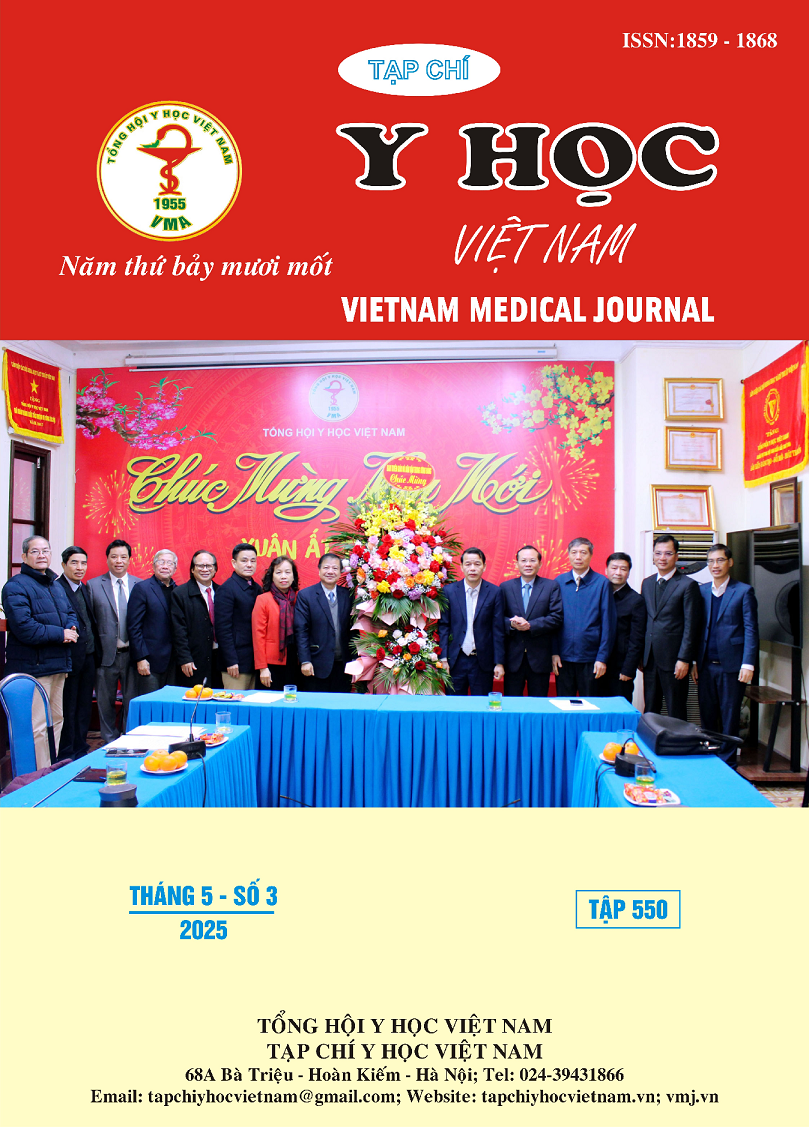DETERMINE THE MEDIUM TIME OF EXTUBATION AFTER REVERSAL OF NEUROMUSCULAR BLOCKADE ON PATIENTS UNDERGOING ELECTIVE SURGERY
Main Article Content
Abstract
Introduction: Evidence from many studies has shown that residual neuromuscular block involves many adverse effects that can contribute to postoperative pulmonary complications1,2. Over the past five decades, quantitative neuromuscular monitoring devices have been used to examine the incidence of postoperative residual neuromuscular block in international clinical practices3 but not all medical facilities are fully equipped with quantitative neuromuscular monitoring devices, thereby creating unsafe gaps for patients. What is the mean time of extubation after reversal of neuromuscular blockade to ensure the patients’s safety? Objective: Determine the mean time of extubation after reversal of neuromuscular blockade and factors that correlate with the decision to delay extubation on patients undergoing elective surgery. Methods: A cross – sectional study on 38 patients undergoing elective surgery at Tam Anh Hospital, from February/2024 to April/2024. Result: The mean extubation time was 5,29 ± 3,031 minutes. However, we failed to show a statistically significant association of correlative factors such as age, ASA, BMI, total dose of Rocuronium, blood loss, fluid administration, surgical time, anesthesia time. Conclusion: It is recommended to wait at least 5 minutes after using Sugammadex and combine with other clinical signs in evaluating the timing of extubation to minimize respiratory complications for patients.
Article Details
Keywords
the medium time, reversal of neuromuscular blockade, extubation
References
2. Murphy GS, Brull SJ. Quantitative neuromuscular monitoring and postoperative outcomes: a narrative review. Anesthesiology. 2022;136(2):345-361.
3. Flockton EA, Mastronardi P, Hunter JM, et al. Reversal of rocuronium-induced neuromuscular block with sugammadex is faster than reversal of cisatracurium-induced block with neostigmine. Br J Anaesth. 2008;100(5):622-630. doi:10.1093/bja/aen037.
4. Hristovska AM, Duch P, Allingstrup M, Afshari A. The comparative efficacy and safety of sugammadex and neostigmine in reversing neuromuscular blockade in adults: A Cochrane systematic review with meta-analysis and trial sequential analysis. Anaesthesia. 2018;73(5):631-641. doi:10.1111/anae.14160.
5. Togioka BM, Yanez D, Aziz MF, et al. Randomised controlled trial of sugammadex or neostigmine for reversal of neuromuscular block on the incidence of pulmonary complications in older adults undergoing prolonged surgery. Br J Anaesth. 2020;124(5):553-561. doi:10.1016/j.bja. 2020.01.016.
6. Cuong NM, Dinh NV, Trung NN, Nam NV, Giang NT, Kien NT. Đánh giá hiệu quả hoá giải giãn cơ bằng sugammadex sau phẫu thuật lồng ngực có nội soi hỗ trợ. Tạp chí Phẫu thuật Tim mạch và Lồng ngực Việt Nam. 11/05 2020;22: 63-69. doi:10.47972/vjcts. v22i.422
7. Lan W, Tam KW, Chen JT, et al. Cost-Effectiveness of Sugammadex Versus Neostigmine to Reverse Neuromuscular Blockade in a University Hospital in Taiwan: A Propensity Score-Matched Analysis. Healthcare (Basel). Jan 12 2023;11(2)doi:10.3390/healthcare11020240
8. Goodner JA, Likar EJ, Hoff AL, et al. Clinical impact of sugammadex in the reversal of neuromuscular blockade. Cureus. 2021;13(6): e15413. doi:10.7759/cureus.15413.
9. Gu X, Gao R, Li P, et al. Sugammadex enhances recovery after abdominal surgery in cancer patients: A real-world, observational study. Ann Palliat Med. 2021;10(12):12566-12574.


